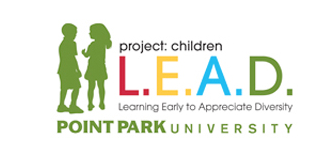Lesson 13 Families and Neighborhoods Lesson Series

Project: LEAD | Curriculum | Resources | Workshops | Activities | About Us
Families and Neighborhoods
Student Teacher: Dean Kraniou
Project Children L.E.A.D. Director: Dr. Vincenne Revilla Beltran
Subject Area: Diversity
Grade level: Middle School (Grade 6-8)
Length of Lesson: 60 minutes
Goals/Purposes: To educate students on their city's history and introduce the many regions and cultural families that live in their neighborhood.
Objective: Given handouts of the City of Pittsburgh, the students will understand the area in which they live and illustrate their neighborhood by completing a drawing of their most favorite building in their neighborhood.
Pennsylvania Department of Education Indicators:
Arts and Humanities 9.1.8
A. Know and use the elements and principles of each art form to create works in
the arts and humanities.
1. Elements - Visual Arts (Color, form/shape, line)
B. Recognize, know, use and demonstrate a variety of appropriate arts elements
and principles to produce, review and revise original works in the arts.
1. Visual Arts (draw, design for environment and multimedia)
Family and Consumer Sciences 11.2.9
F. Contrast past and present family functions and predict their probable impact on
the future of the family.
Geography 7.3.9
B. Explain the human characteristics places and regions by their cultural
characteristics.
2. Culture distribution (e.g., ethnic enclaves and neighborhoods).
C. Explain the human characteristics of places and regions by their settlement
characteristics.
1. Current and past settlement patterns in Pennsylvania and the United
States.
Health, Safety and Physical Education 10.3.9
D. Analyze the role of individual responsibility for safety during organized group
activities.
History 8.2.6
A. Identify and explain the political and cultural contributions of individuals and
groups to Pennsylvania history from Beginnings to 1824.
1. Inhabitants (e.g., Europeans, Africans)
C. Identify and explain how continuity and change have influenced Pennsylvania
history.
5.Settlement Patterns (e.g., native settlements, Westward expansion,
development of towns)
Reading, Writing, Speaking and Listening 1.6.8
A. Speak using skills appropriate to formal speech situations.
World Languages 12.1.1
-
Speak and model phrases and sentences with refined pronunciation, rhythm
and intonation with accuracy and cultural understanding.
Materials:
-
8 x 12 Construction Paper
-
Pencils
-
Colored Pencils
-
Rulers
-
Two books about the history of Pittsburgh with pictures
-
Map of the City of Pittsburgh's Neighborhoods
Procedure:
-
Review and Assessment of Prior Knowledge
1. Reintroduce ourselves and briefly discuss what we learned in last week's
lesson, "I am special and you are special too."
-
Introduction to the Theme
1. Students will be asked historical questions reflecting their knowledge about
the city in which they live.
2. A brief history of the city will be taught to the students. We will learn the
dialect spoken of those who are from this city, Pittsburghese, with a
handout describing some popular words and learn how the accent came
about. A map of present-day Pittsburgh and its neighborhoods will be
passed out to all students. They will learn about the different cultural
groups that settled in Pittsburgh and why they settled here.
3. A select amount of neighborhoods where cultural groups settled will be
briefly covered giving them a background of several different areas of their
city. This will include interesting facts of the areas and of the various
cultural groups who settled there.
C. Conclusion
1. After learning about the different families and neighborhoods locally, the
students will draw a picture of their family and their favorite building in
their neighborhood, the city of Pittsburgh.
2. At the last five minutes of the lesson, we will share our drawings with one
another and explain why we chose our drawing.
Evaluation:
-
Of Pupils:
1. The students will show that they learned about their neighborhood by
drawing a building in their district.
2. A question/answer session will take place throughout the presentation.
B. Summary:
1. The students will conclude the lesson by sharing their pictures with their
classmates.
Bibliography
Arthur, David. Pittsburgh: City of Steel. Cambridge, MA: Blackwell Inc. 1995.
City of Pittsburgh Maps: Home Page for the City of Pittsburgh. Retrieved from the
World Wide Web from http://www.city.pittsburgh.pa.us/cp/maps/ on 5 October 2004
Neighborhoods of Pittsburgh: Home Page for the City of Pittsburgh. Retrieved from the
World Wide Web from http://www.city.pittsburgh.pa.us/cp/maps/ on 5 October
2004. 2004.
Theoron, Amanda. The Big Book of Pittsburgh History. Needham Heights,
MA: Allyn and Bacon. 2001.
WQED Multimedia: Pittsburgh History Series: Creating Community and Culture.
Retrieved from the World Wide Web from
http://www.wqed.org/erc/pghist/units/folks/folks2.shtml on 3 October 2004 .

